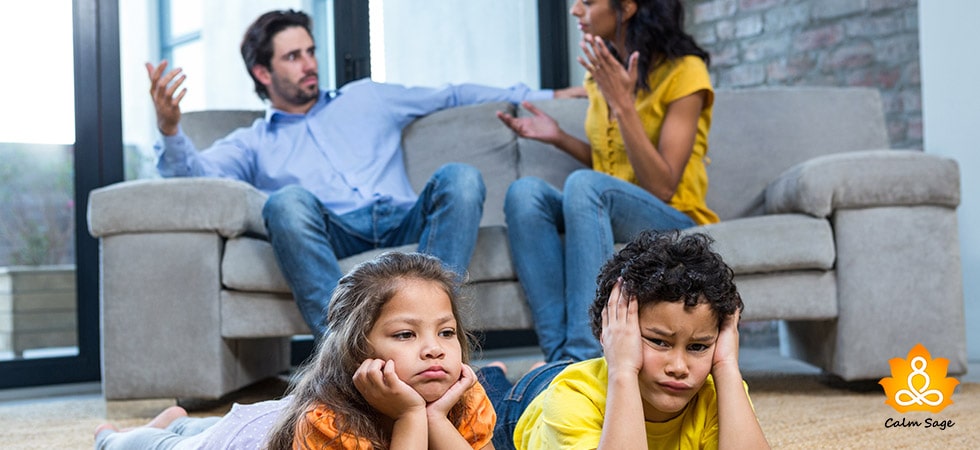Dysfunctional Family: How To Break The Cycle Of A Dysfunctional Family

Have you ever watched movies like Goodnight Mommy, Hereditary, August, Little Miss Sunshine, Knives Out, or The Darjeeling Unlimited? Did you find something common in these movies? All these movies convey a strong message regarding the importance of familial bonds and relationships. Not only this, such movies cover an important topic which is dysfunctional families.
Dysfunctional families are grounded on issues like secrecy, neglect, emotional unavailability, abuse, addiction, denial, and more! In such families, children struggle through emotional unavailability because primary caregivers or parents are involved in negative practices such as abuse, addiction, or high-end conflicts.
For example, substance use disorder is one of the common mental health issues faced in a dysfunctional family. Dysfunctional parents have their own authoritative style of parenting wherein they are constantly involved in toxic or abusive relationships with each other.
Some other issues faced by a dysfunctional family can be infidelity, adulterous affairs, workaholism, shopaholism, overeating, gambling, addiction, and others.
In this blog, we will be taking a deep look at what is a dysfunctional family, the signs of a dysfunctional family, examples, and how to break the cycle of a dysfunctional family. So, let’s get started!
What is a Dysfunctional Family?
It’s a universal fact that no family is perfect, every family goes through ups and downs. However, when we talk about a dysfunctional family, the emotional needs are met and such problems are knowingly ignored or denied by parents.
As a result, children who try to bring forward their emotional needs are punished which indirectly results in reduced self-worth and identity questioning. Scapegoat is another important example of a dysfunctional family; it is done to divert attention away from the real issues.
A dysfunctional family struggles with multiple internal or external problems such as sibling rivalries, domestic violence, parent-child conflicts, mental or physical illness, extramarital affairs, drug use, addiction, single parenthood, financial concerns, traumatic family occurrences, unemployment influences, and others.
Whatever the root cause, children tend to suffer a lot from dysfunctional family patterns. In the end, we all need a family who is able to provide stability, nourish our emotional needs, acknowledge real problems, and enhance our self-esteem.
However, a dysfunctional family is not able to do that because primary caregivers are involved in negative things. The only way to overcome a dysfunctional family is to break the cycle. Keep reading this blog to gain a deeper understanding and know how to break the toxic cycle of a dysfunctional family.
Examples of a Dysfunctional Family
Dysfunctional families stem from different issues and the problems might look different to everyone. Below listed are some of the common examples of a dysfunctional family:
1. Emotional unavailability:
Emotional unavailability is one of the most common issues faced in dysfunctional families. Unmet emotional needs can be seen through a lack of physical affection, coldness, or lack of encouraging words.
Authoritative parents are mainly known for their cold behavior. Workaholism, addiction, abusive romantic relationships, or financial issues build up emotional unavailability towards children.
2. Enabling behavior:
Have you ever seen people pushing up or encouraging things that should not be allowed or lead to consequential actions? That’s called enabling behavior which is commonly adopted by parents who are addicted to something, in a codependent relationship, or dismissive.
3. Addiction:
Addiction can be one of the most common struggles of a dysfunctional family. A parent who’s addicted is highly dependent on toxic substances which make them unavailable to children’s responsibilities and roles.
A healthy family evolves when both parents are mindfully involved. It’s a fact that a sober partner is not able to bring positive changes into the family as they are highly engaged in fulfilling regular roles and responsibilities.
4. Highly-conflicted families or relationships:
Conflicts or disagreements lead to various problems (be it financial issues, mental, or physical). In some severe cases, conflicts can convert into violence, abuse, harsh criticism, or disagreements which make a child feel abused verbally, emotionally, mentally, sexually, and physically.
In such situations, children grow up in a toxic environment which puts them at risk of developing substance abuse, depression, anxiety, trauma, and other issues in adulthood.
5. Abuse:
Families wherein each other’s sentiments are hurt or are involved in abuse (be it physical, sexual, mental, or verbal) are looked up as dysfunctional families. The rage instantly converts into anger, betrayal, and other issues.
6. Perfectionism:
Perfectionism is toxic and unrealistic, and it directly damages bonding with family members. Perfectionism can be seen through anger, failure, shame, rejection, or guilt. Perfectionism includes a lot of pressure which impacts mental health as well.
7. Unpredictability and unknown fears:
Unknown fears or constant uncertainty directly damage relationships as it results in a lack of self-expression and honesty.
8. Lack of boundaries:
A controlling parent, codependency, and lack of self-expression results in ignorance and avoidance by all family members.
Signs of a Dysfunctional Family
A dysfunctional family is easy to spot because the signs stem from various mental health issues such as abuse, betrayal, trauma, violence, addiction, and toxicity. A dysfunctional family may look as:
- A dysfunctional family tends to deny real issues and punish family members who dare to speak about them in front of everyone.
- A dysfunctional family is involved in gaslighting as they exaggerate household troubles and often avoid looking into real issues that need to be resolved.
- Children of a dysfunctional family are unaware of normal behavior; they are habitual of seeing nuisance, violence, or abuse regularly.
- A dysfunctional family avoids spending time with other family members as they tend to ignore or avoid issues.
- A dysfunctional family usually works with negative parenting styles such as authoritarian or dismissive parenting styles.
- A dysfunctional family functions on enabling behavior or addiction.
- A dysfunctional family is a highly conflicted family wherein everyone tends to ignore and avoid meeting each other’s emotional needs.
- A dysfunctional family lacks self-confidence or self-esteem.
- A dysfunctional family keeps secrets that all family members should share.
- A dysfunctional family covers up each other’s problems knowing that such actions or behaviors should be not allowed or forgiven.
- A dysfunctional family pretends to be a normal functioning family knowing that they are not.
- A dysfunctional family pretends to have a people-pleasing personality.
- Other common signs of dysfunction can be scapegoating, violation of boundaries, deprivation of emotional necessities, domestic violence, lack of self-expression, harsh criticism, self-medication, and unhealthy eating habits.
Mental Health Effects of a Dysfunctional Family
When a family member goes through the struggles of a dysfunctional family, they may experience mental health issues such as:
- Anger
- Behavioral issues
- Development of mental health issues such as paranoia, depression, anxiety, and others
- Inability to form healthy relationships
- Lack of self-esteem
- Lack of self-expression
- Loneliness
- Negative self-image
- Poor academic performance
- Post-traumatic stress disorder (PTSD)
- Self-criticism
- Self-harm
How to Break the Cycle of a Dysfunctional Family
As I said, it’s easy to find or spot a dysfunctional family, the fact is that people definitely know that they are involved in unhealthy patterns however, they tend to deny or ignore their problems. Therefore, acknowledgment of issues becomes the first ever step to break the cycle of a dysfunctional family. Below listed is a road map to break the cycle of a dysfunctional family:
1. Acknowledgment
The first important step to break the cycle of a dysfunctional family is to acknowledge issues, sit with your family, talk about your issues, and take the next important step to break the cycle.
2. Connect through a mental health professional
After acknowledgement, it’s important to connect with a mental health professional or a family counselor to address issues, resolve past traumas, work on addiction, and get a proper diagnosis related to hidden mental health disorders such as trauma, stress, addiction, enabling behavior, and others. Additionally, a mental health professional teaches you effective and healthy coping skills to
3. Avoid toxic people
Take a step ahead and start avoiding things that harm you or your family members. Avoid people who encourage negative behaviors or actions. Try to surround yourself with people who support you and bring out the best version of you. Toxicity (in the form of substances, people, or other things) must be avoided at all costs to provide a safe and healthy environment to your family members.
4. Adopt healthy parenting strategies
Negative parenting styles are one of the major root causes of dysfunctional families, therefore, work on yourself and adopt healthy parenting strategies such as positive parenting, gentle parenting, peaceful parenting, or dolphin parenting style.
5. Work on addiction, gambling, and other unhealthy habits
Indulge yourself in self-care and self-love and convert your addictions or unhealthy habits into healthy habits to encourage a safe and healthy environment at home. Additionally, self-care and self-love will also promote a safe environment to express thoughts or communicate feelings.
6. Actively participate in family activities
In order to build a safe space for everyone, actively participate in family activities such as cleaning, cooking, or shopping. In this way, you will be engaging more with other family members. Additionally, you can also plan for a movie night or game night to enhance the bonding with each other.
I hope this blog helps you understand everything you want to know about a dysfunctional family. For more such content, connect with us through all social media platforms.
Thanks for reading!




















